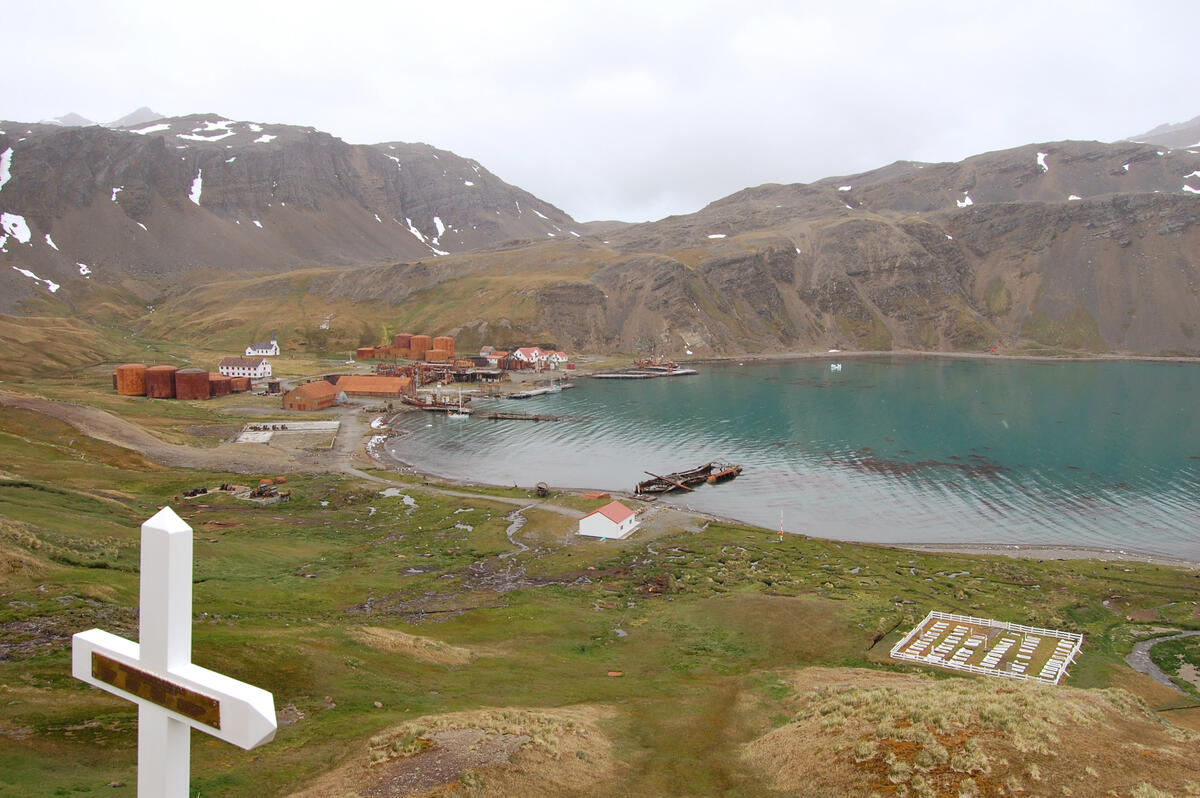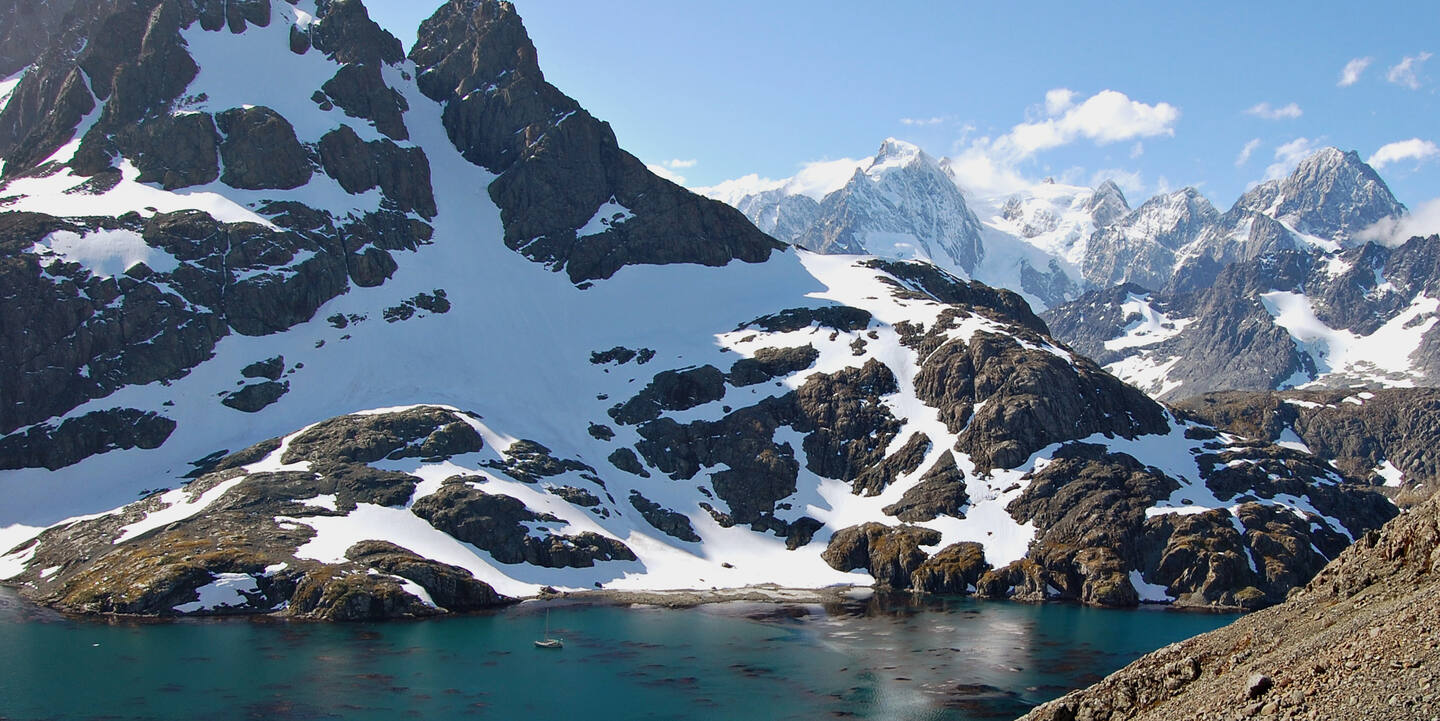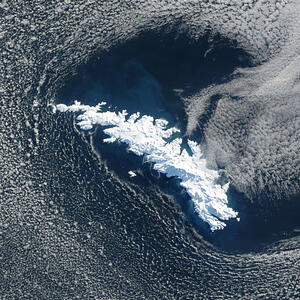
Visiting South Georgia Island, as with the wider Antarctic region, has been a lifelong dream of Peter’s. The harsh mountainous island lies deep in the South Atlantic below the Antarctic Convergence, a protrusion of the submarine range that loops around westward from the South American Andes before diving south again toward the polar continent.
South Georgia exhibits spectacular terrain that hints of Antarctica. Farther north than many of the other Antarctic islands, it enjoys a modicum of greenery in the form of tussock and grasslands barred elsewhere, but nonetheless is not a practically habitable land. Early explorers wrote it off as a disappointing discovery of, in their view, no possible utility. The local massive populations of albatrosses, penguins, seals, and other wildlife would beg to differ. Seals and whales particularly have, to their own unfortunate detriment, been the cause of the principal historic interventions of mankind; a handful of once sophisticated and thriving whaling and sealing stations remain at the inlets and natural harbors of the island. All are now abandoned and decrepit, of historic interest only to intrepid modern-day visitors curious to meet their ghosts.
South Georgia, and the sub-Antarctic region in general, can be one of the harshest environments on the planet, and any visit demands the upmost of careful preparation with an appropriate vessel, equipment, and crew. Boaters inspired by the following Photo Story should recognize that this is not a cruising guide nor navigational aid.
Landfall and King Edward Cove
Having sailed from Stanley in the Falklands some four and a half days and 800 NM (1480 km) earlier, Kiwi Roa expected landfall at sunrise – about 04:00.
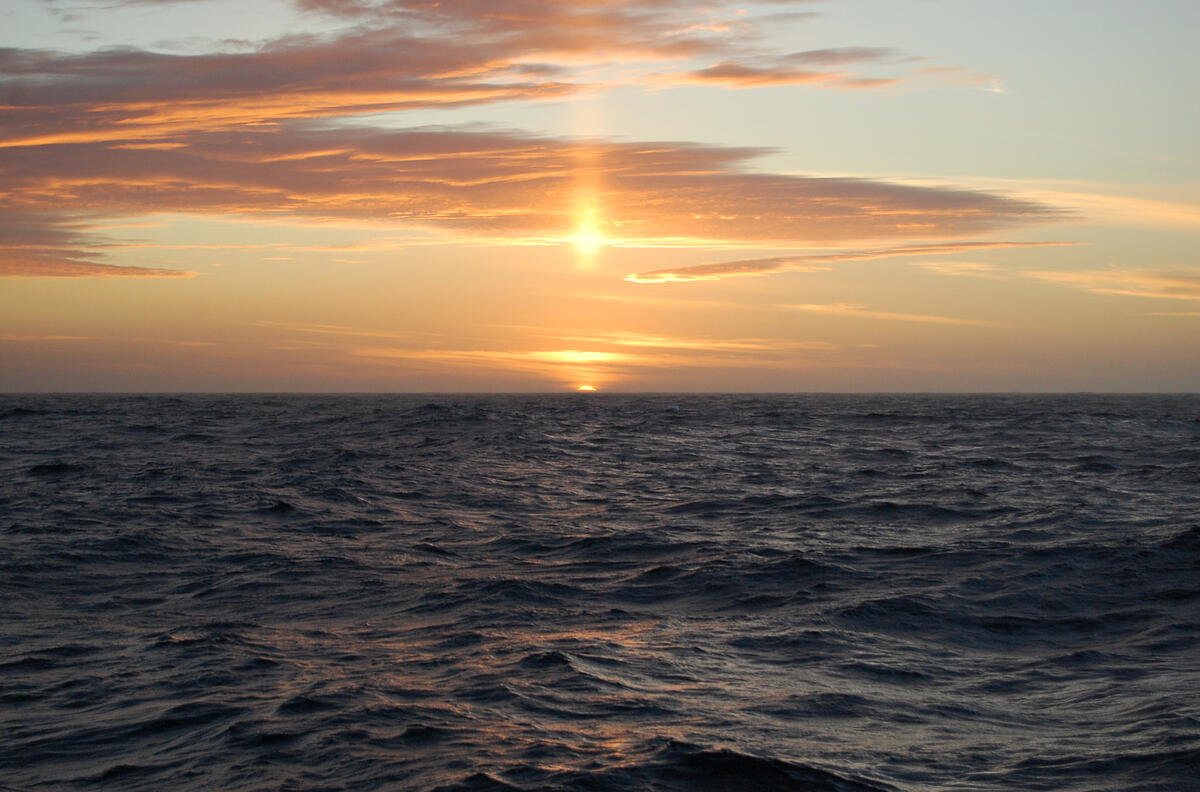
Approaching the island, the scene captured below lasted for a good 45 minutes. After four wild and foggy days at sea, Peter considered this to be the most beautiful of all landfalls in his experience – beating out even some of the marvels to be found in the South Pacific.
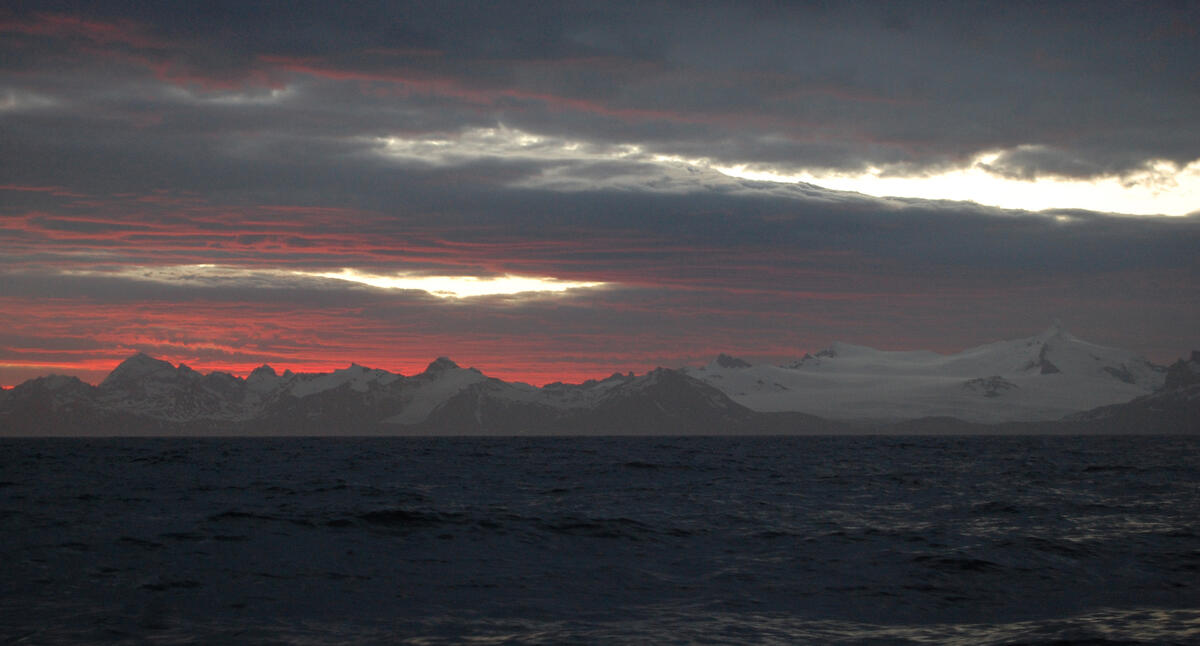
A few hours later, morning found Kiwi Roa running east along the northern coast headed to the British station at King Edward Point. The terrain is immediately revealed as Antarctic in nature, only softened very subtly by hints of greenery on the mountain slopes and plains.
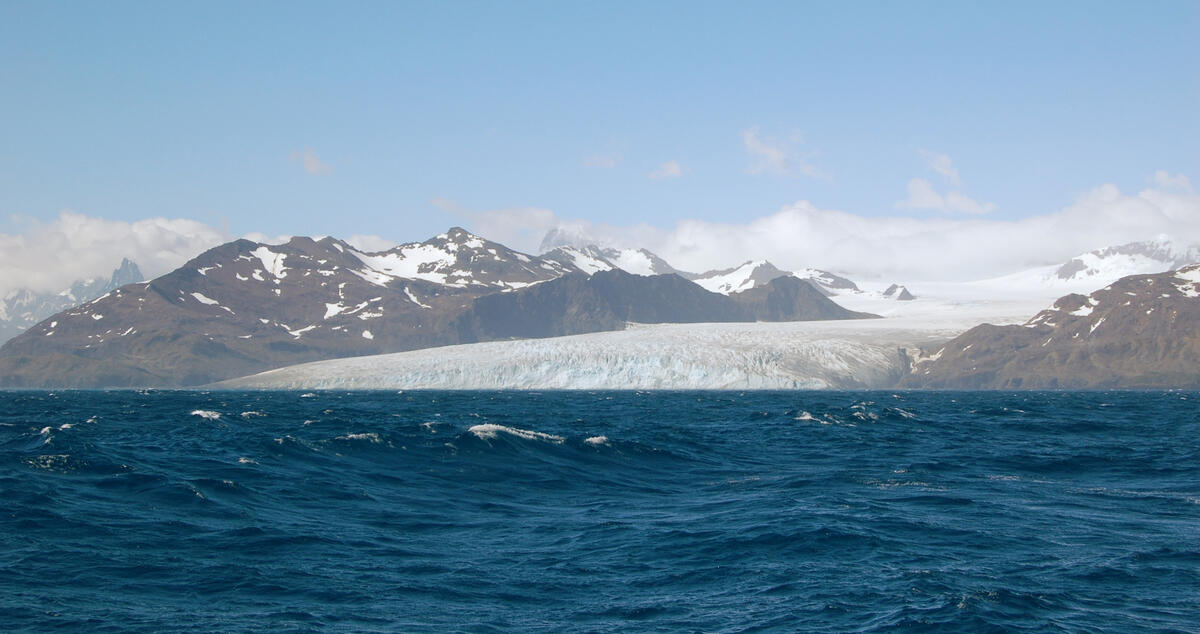
Four hours out from shelter, a serious incident and resulting consequences. The autopilot went berserk and caused a standing crash gybe in a freshening breeze, shearing the boom in half at the bails. With no other damage, the boom’s aluminium sections – the other half lashed to the aft deck in this photo – would have to be jury-rigged ashore.
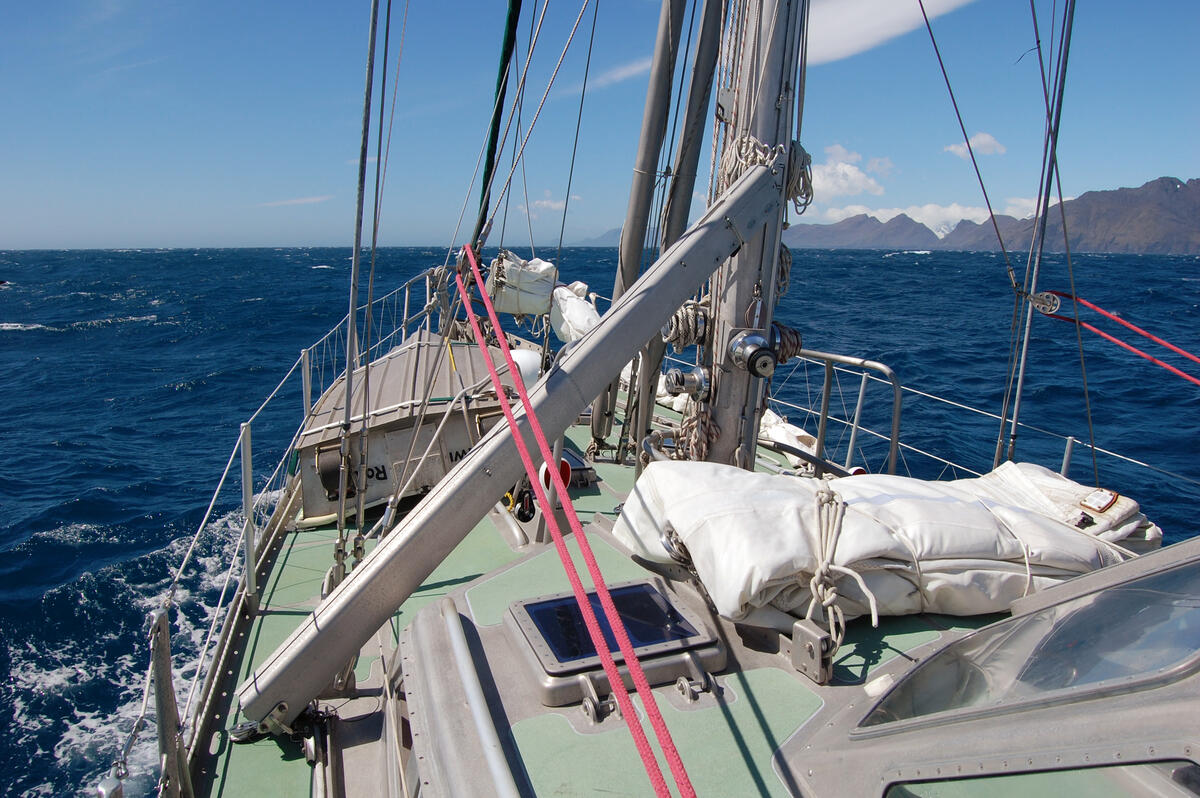
Motoring the last few hours, we approached King Edward Cove within Cumberland East Bay. The interior mountains were, rarely, mostly free of cloud cover, affording a welcoming impression.
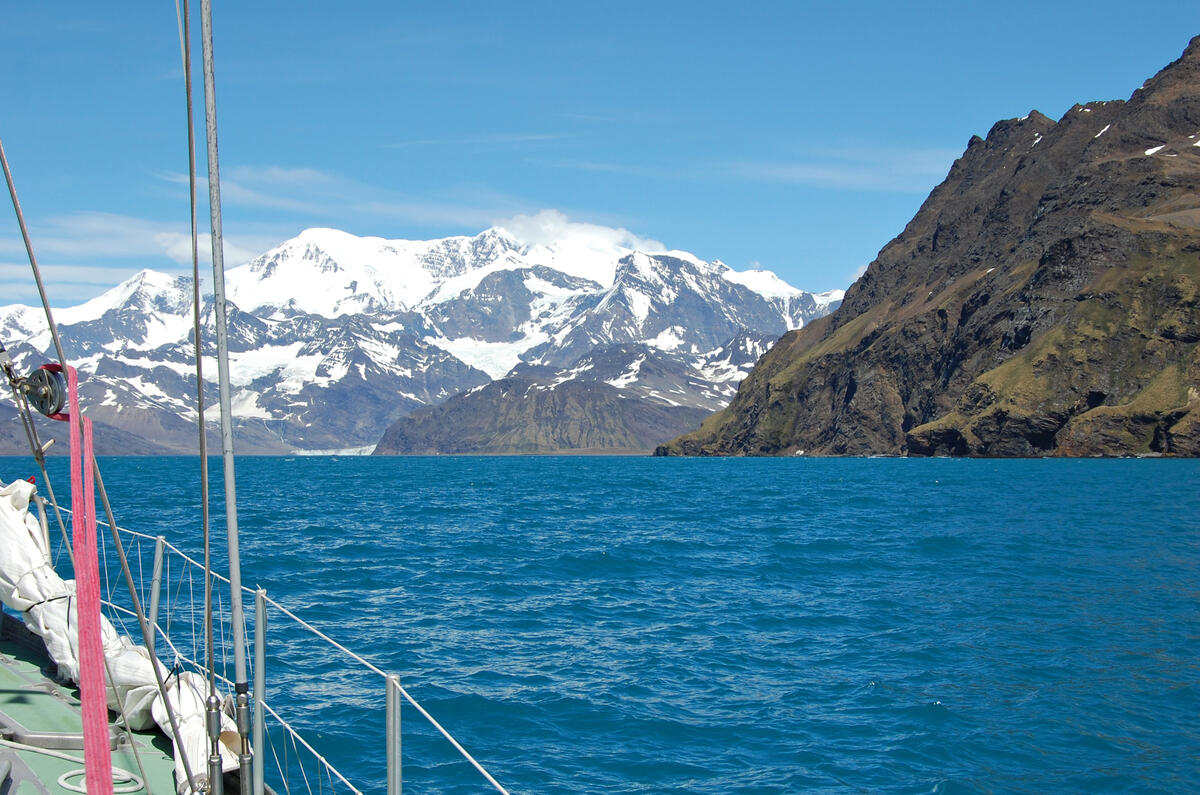
At King Edward Point (KEP) the British Antarctic Survey has a research station located on the promontory, staffed by between ten and twenty scientists and administrators. South Georgia is a UK Overseas Territory administered by its own government based in the Falklands; the day to day work by the transient inhabitants is principally applied fisheries research.
The older buildings to the left in the below photo, at the head of the cove, are the remains of Grytviken whaling and sealing station.
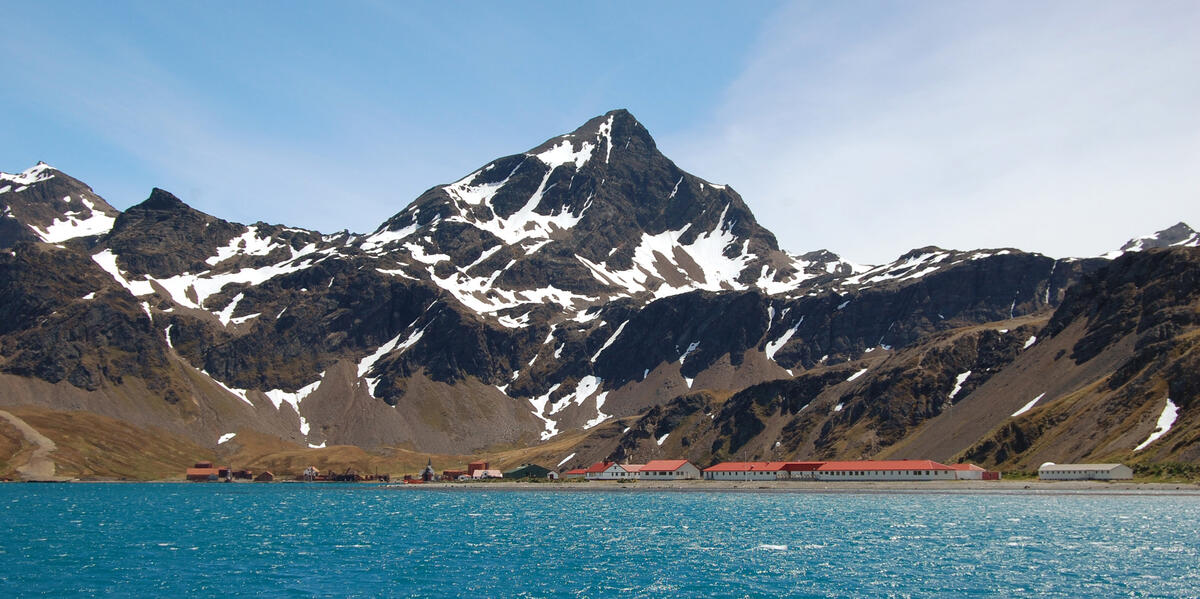
The KEP station is a tiny settlement of just a few buildings, the current ones built or re-built in 2001, and a dock for support shipping. The British have posted representation here since 1909, with a few interruptions over the years – most famously in 1982 when the Argentines made their first occupation of the British South Atlantic territories that led to the Falklands War. King Edward Cove saw mild hostilities during the conflict, with three Argentines killed during the invasion against a detachment of Royal Marines and another during the later recapture.
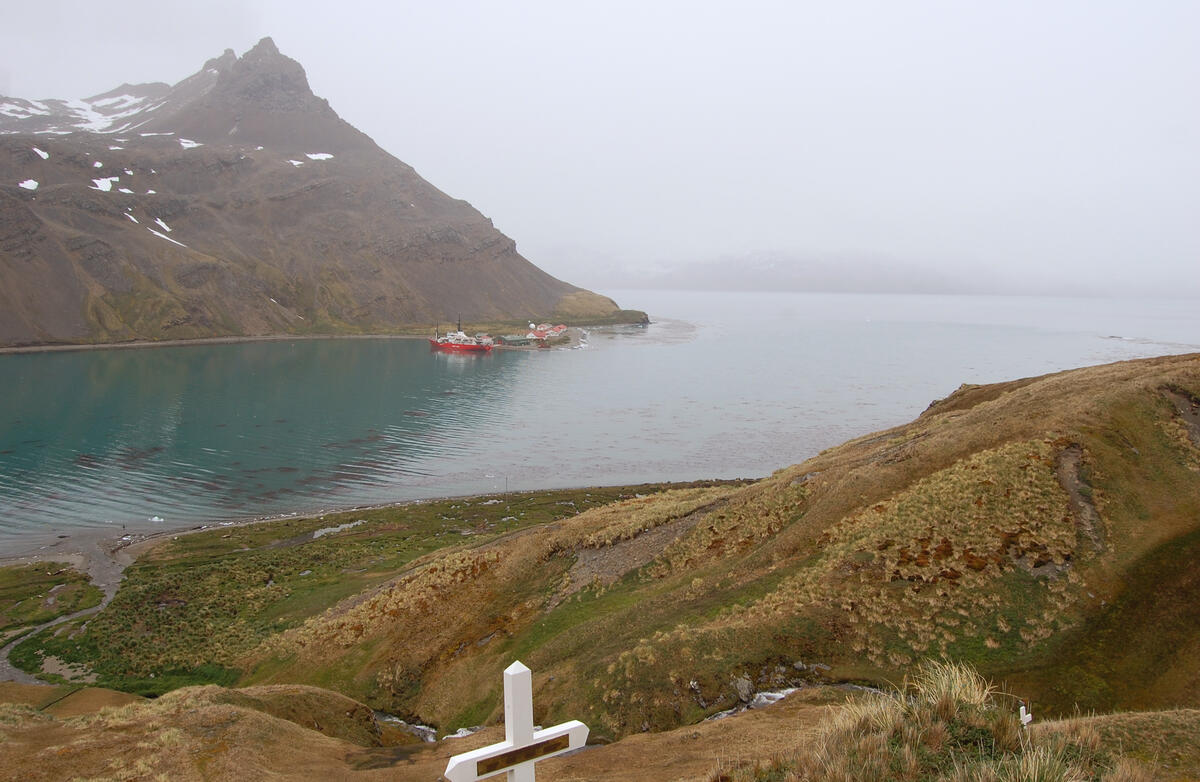
If the place is worth fighting over, it’s not for the pleasant weather. This is the common picture in the coves and inlets around South Georgia: more salt in the air than oxygen. Winds that are a more moderate (relatively speaking) 40 or 50 knots out in the open ocean are funneled, twisted, swirled and accelerated into brutal and sustained blasts that bring a reality check if the weary sailor had been impressed by the appearance of a protected harbor.
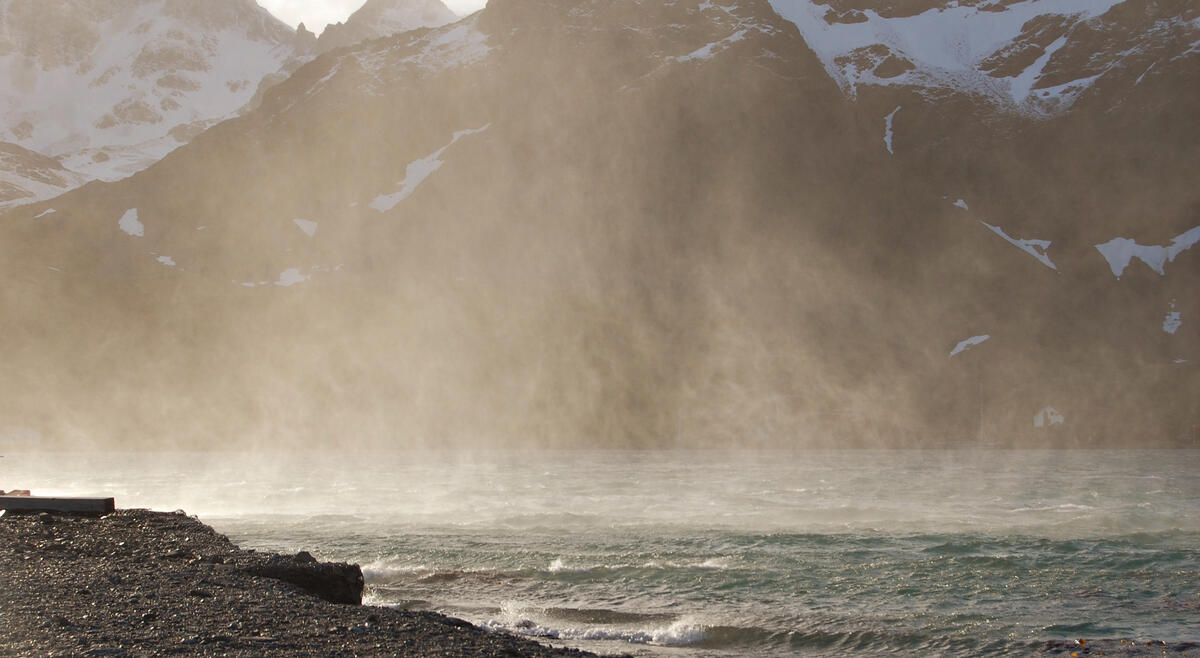
The kelp in the below photo, the dark patches in the water near the shore, dampens the waves and serves to disguise the full betrayal of the wind’s presence. There’s about 50 knots of wind at the camera – out in the bay we don’t know how much, but it’s a lot more. That spray in the air extends up to 50 meters height.
And this is, really, quite routine. Kiwi Roa’s movements around the island were to be sternly dictated by the inclement weather and requisite precautions.
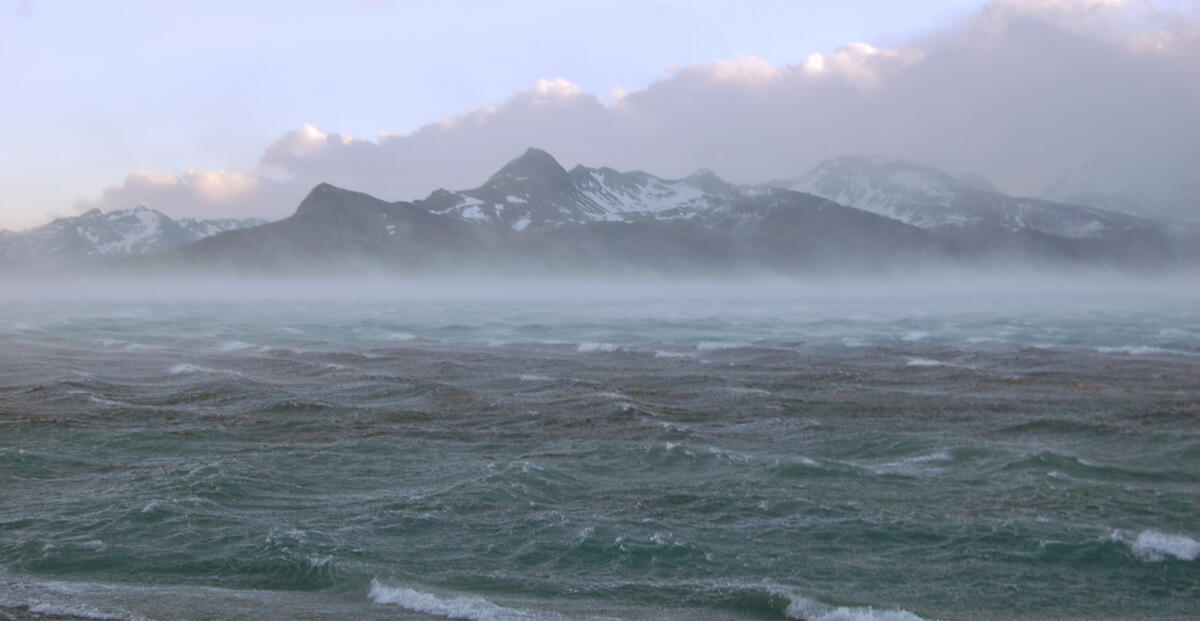
While in King Edward Cove, visiting small yachts can moor at one of the old docks – a section of which is maintained – at the Grytviken station.
Established in 1904 by an Argentine company headed by a naturalized Briton – formerly Norwegian – Grytviken was one of the most successful whaling enterprises in South Georgia. In its first year alone it was responsible for the demise of nearly 200 whales, and was worked by 300 men at its peak. The decline of the regional whale population led to its eventual closure and abandonment in 1966.
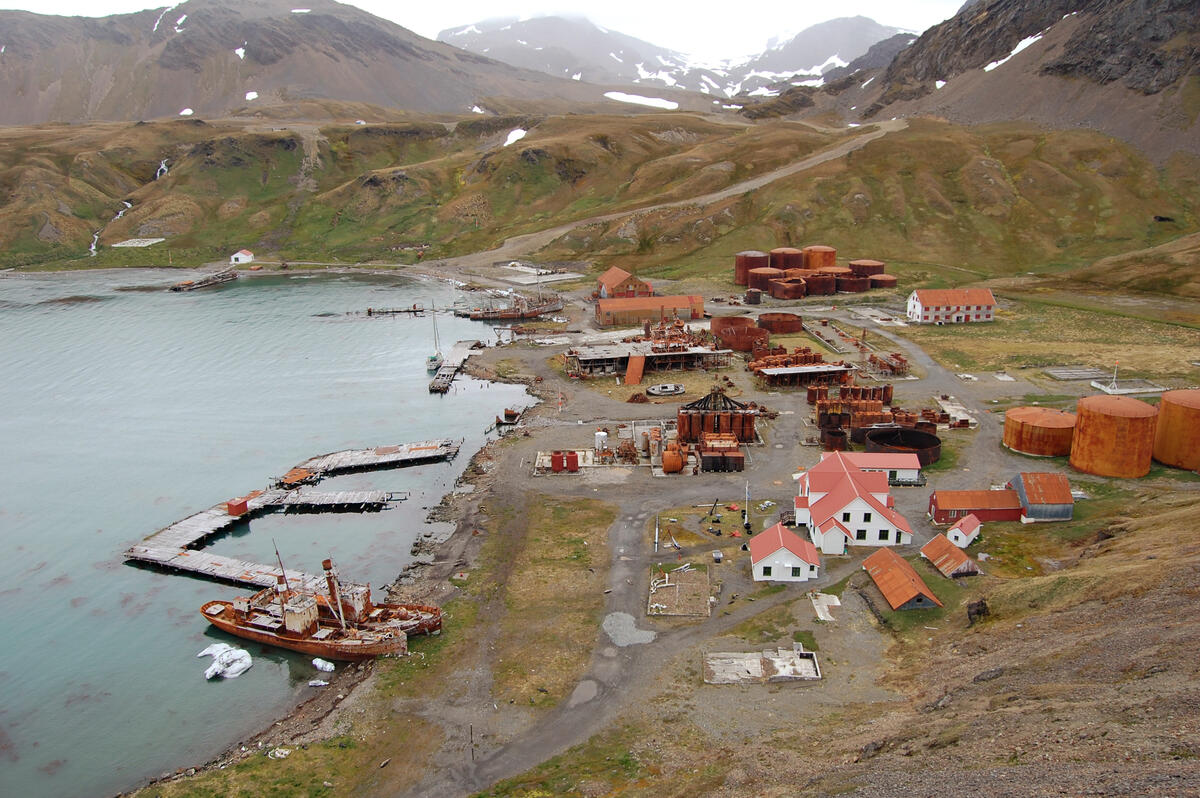
The sight of abandoned infrastructure, equipment, plants, and shipping would become common. The 250 ton whale chaser Petrel lies beached, unwanted now and at the relief of her former prey.
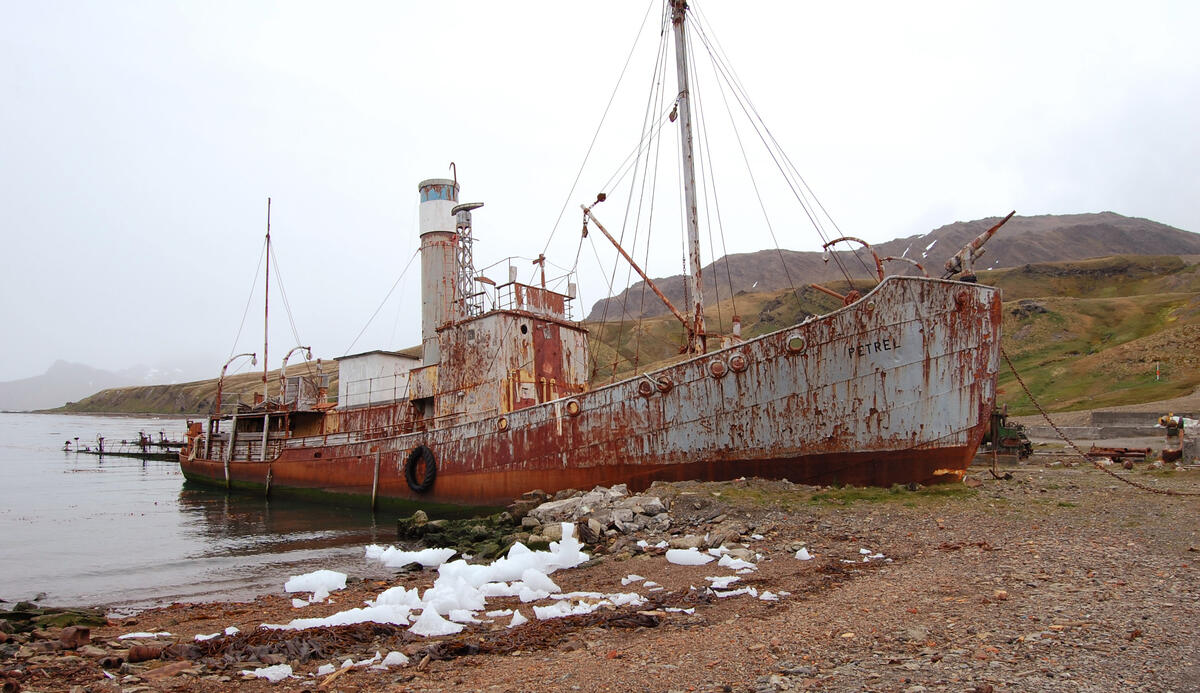
Smaller boats, along with the tackle of larger ones, rest ashore, scattered amongst the remains. If the rust and detritus is unsightly, the lines of this small tug go some way to compensate.
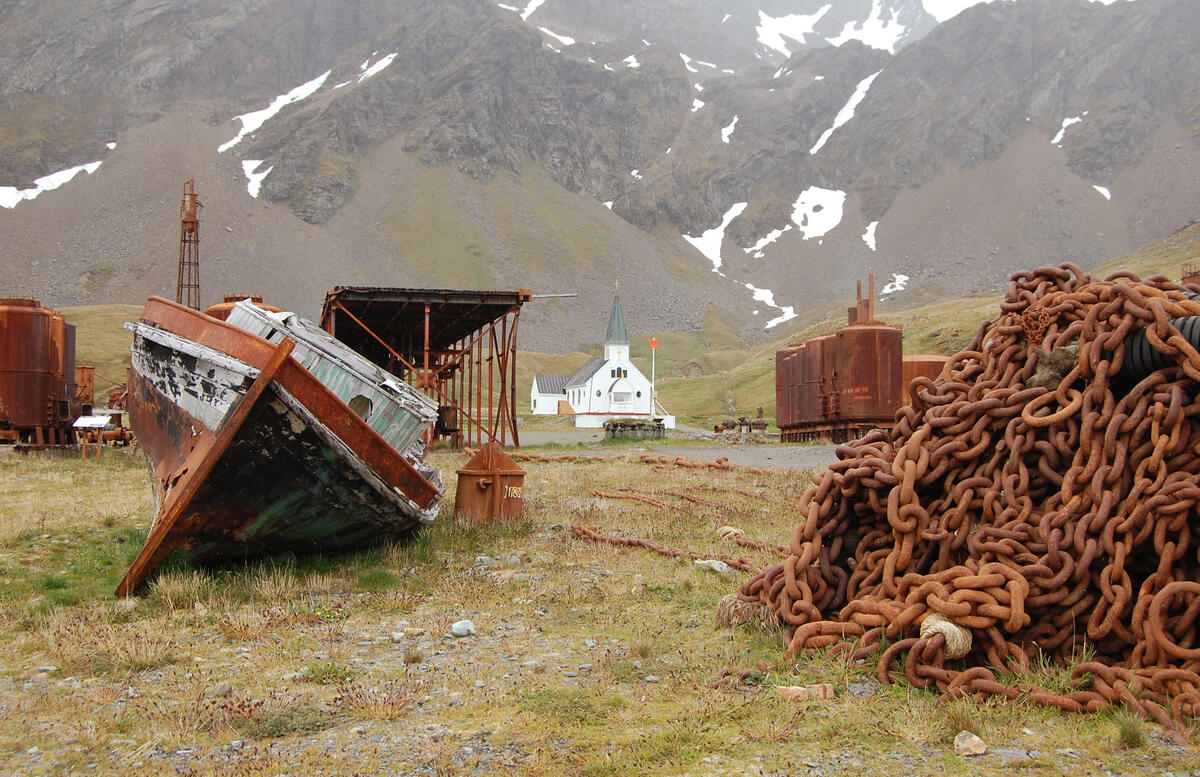
Around this small outpost of mankind there are hints of the true dominant populaces of South Georgia.
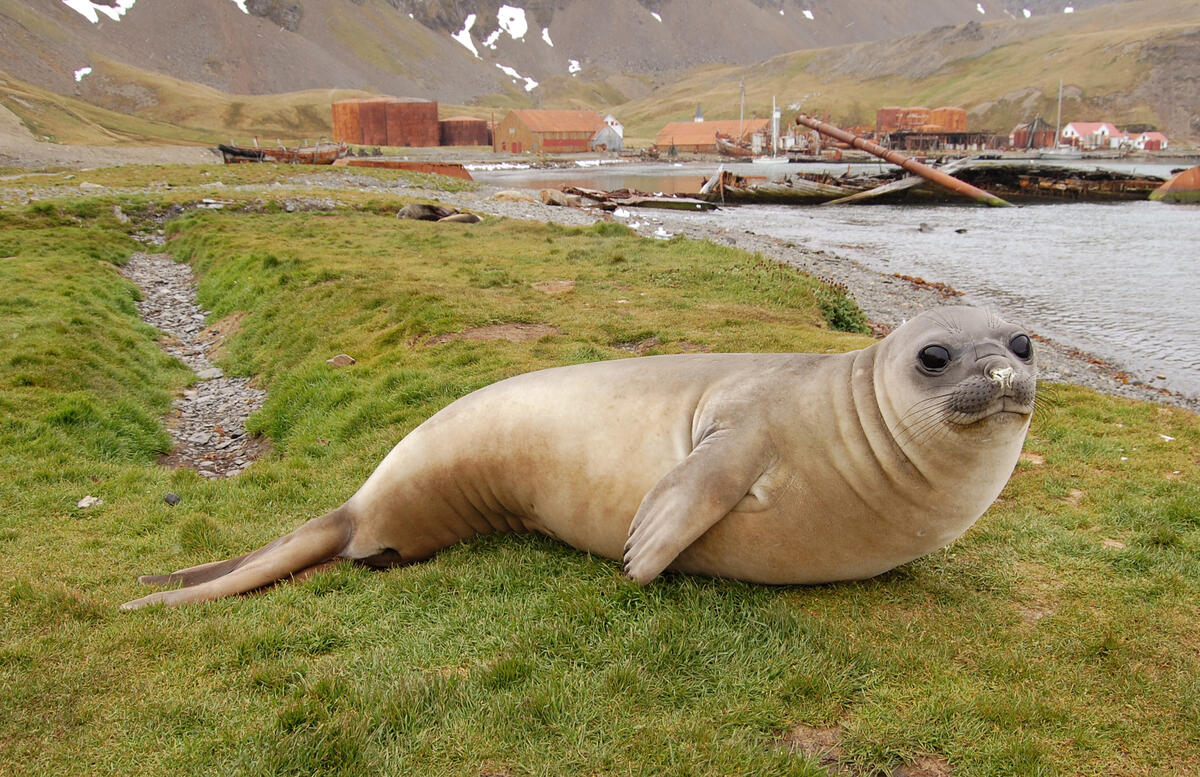
These fur seals, a male and a female, were out to play.
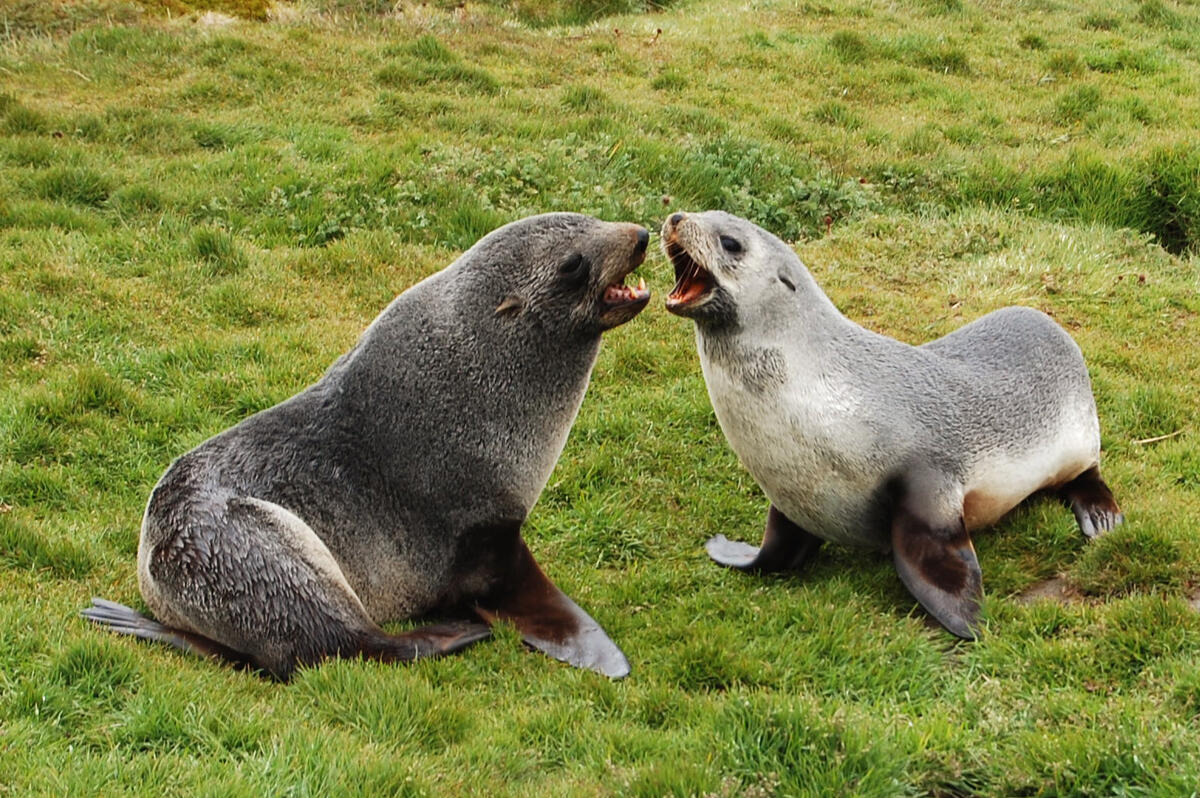
Grytviken has a graveyard located a short way from the settlement, the resting place of a number of its former workers, one grave of which is of particular interest to admirers of the famous figures from the Heroic Age of Antarctic Exploration.
